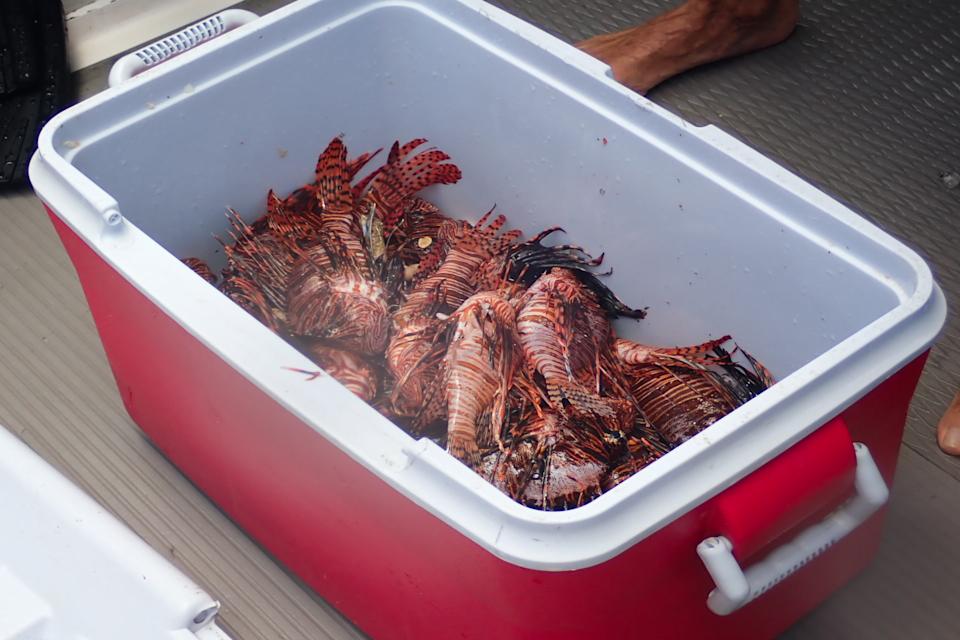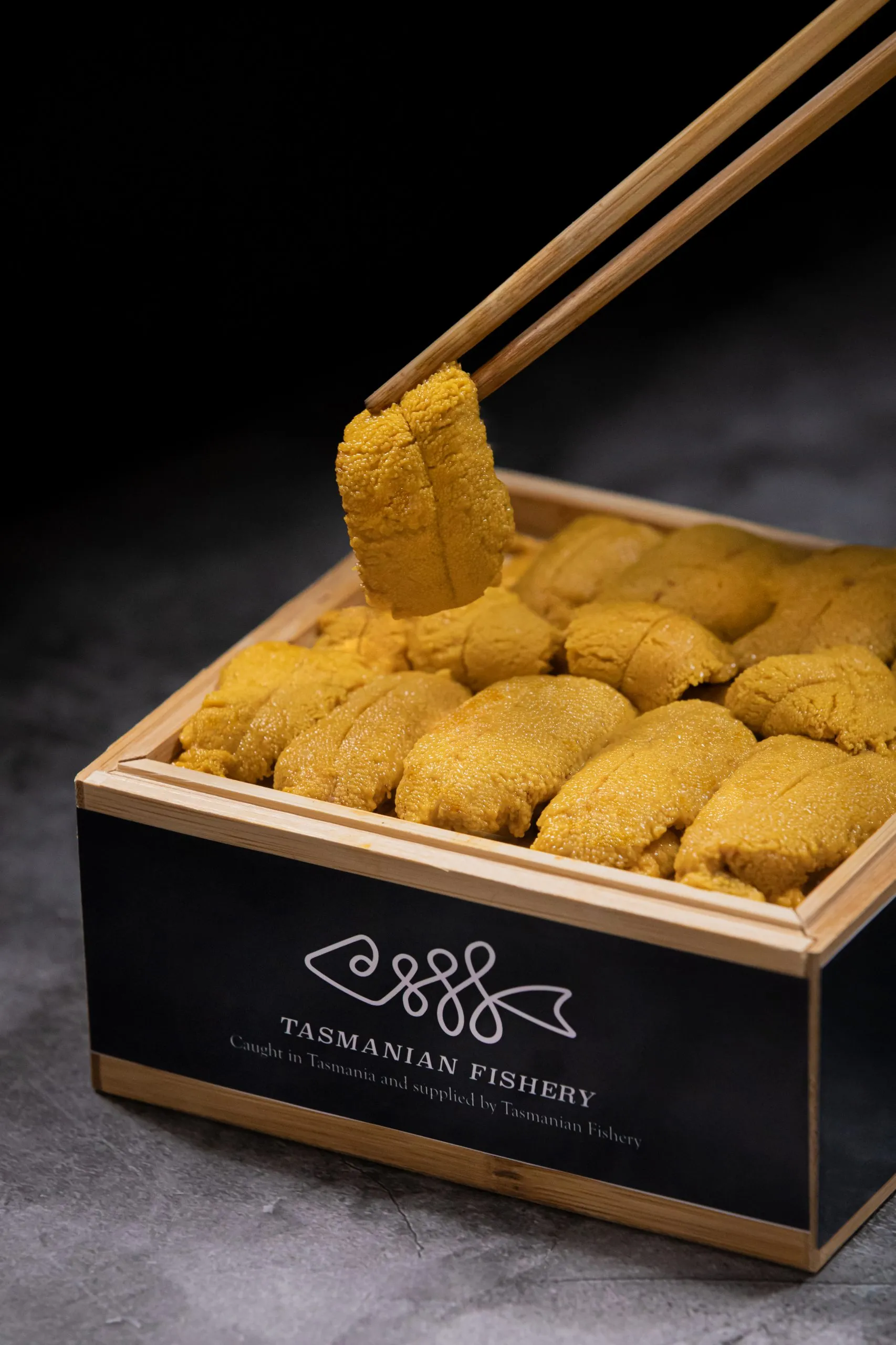Lionfish Rodeos and Overfishing Urchins
Lionfish control (credit: NOAA)
In marine environments as different as Florida and Tasmania, invasive species are changing the undersea character by degrading biodiversity. As they move, the invaders are altering or destroying the ecosystem's structure and reducing ecological complexity. Two voracious species are especially destructive, one the lionfish and another the spiny sea urchin.
The National Atmospheric and Oceanic Administration (NOAA) calls the lionfish: "the poster child of invasive species". It threatens the stability of coral reefs, the general ecosystem structure, and populations of important commercial and recreational fish species. This invader, native to the Indian Ocean and Western Pacific, was likely released by hobbyist aquarium owners into Florida waters. Its population has exploded exponentially with its remarkable fecundity.
In Florida, the Live Wildly Foundation sponsored the Emerald Coast Lionfish Open to see how many lionfish could be harvested during a tournament. The Foundation has their stated goal to use entrepreneurial conservation efforts while seeking to balance growth, with a stable economy, while staying connected to a resilient environment. Teams of fisher folks would compete to catch the most, the largest, or the smallest lionfish, and winners would receive cash prizes up to $10,000. Their 'rodeo' aimed to o Turn Invasive Lionfish from Malicious to Deliciouso Turn Invasive Lionfish from Malicious to Deliciousturn the malicious into edible or as one rodeo participant said: lionfish are venomous, invasive, and delicious.


Lionfish fishing boat catch (credit: Lionfish Open) Grilled Lionfish dinner (credit: Lionfish Open)
Not satisfied with simply reducing the number of the marine predators along Florida's Emerald Coast, Live Wildly invited local chefs to prepare lionfish dishes for tasting at their restaurants. They were the first sponsor for such an event with the eateries featuring lionfish on their menus, educating customers on the invasive predator, and encouraging other Florida restaurants to follow their lead.
Lionfish can be prepared with many culinary approaches. Once cleaned the fillets can be fried, baked, broiled, steamed, and poached having a mild taste compared to snapper, sea bass, and hogfish. While not a participant in the Florida cook-off, international chef Gordan Ramsay illustrates how to go from reef to range top in a video.
In the 'land downunder', the spiny sea urchin has spread southwards to destroy kelp forests in Tasmania. As with the Lionfish attacking Florida and the Caribbean, this invasive species can complete denude Tassie kelp beds creating underwater 'deserts' known a urchin barrens. The longspined sea urchin is not native to Tasmania, and its increasing numbers have significantly impacted the Australian state's kelp forests and marine ecosystem.

Long-spined sea unchin barrens in Tasmania (credit: Tasmania Sea Atlas)
Tasmania's Institute of Marine and Antarctic Studies (IMAS) has been conducting surveys of the invasive spiny urchins along Tasmania’s East Coast measuring the increases in their populations and the resulting urchin barren areas created from their kelp grazing. Using scuba gear and underwater video feeds the investigators surveyed over 150 sites since a baseline survey was carried out years 2001. Their 2023 survey report found that since 1978, when a single Long-spined Sea Urchin was found in St. Helens Bay, populations has grown to an estimated 20 million urchins. For eastern Tasmania, the urchins has grown from an estimated 11 million to more than 18 million, with an average increase 170 tons per year. Since the 2001 survey, urchin barrens now covered an estimated 15% of reefs compared to 3% previously.
As part of their new survey, IMAS divers completed a first round of targeted longspined sea urchin removals to help restore and protect kelp habitat that abalone and other reef-dependent species require. They developed a ‘take-all’ Restoration by Harvest program involving commercial divers harvesting urchins of all sizes along the eastern sections of the Tasmanian coast.
The first harvest saw over 22 tons of urchins (~73,000 urchins) removed from the sea. Larger urchins were processed for their roe and sold to domestic and international markets as uni, a delicacy available at sushi restaurants.


Spiny sea urchin roe (credit: University of Tasmania) Fresh uni sushi (credit: Tasmanian Products)
Invasive species are a major and growing problem. Costs for their removal have been estimated to exceed $21 billion in the US alone. Innovative programs such as these that involve ecological restoration, active harvesting, and new culinary uses should be considered a win, win, win opportunity. WHB